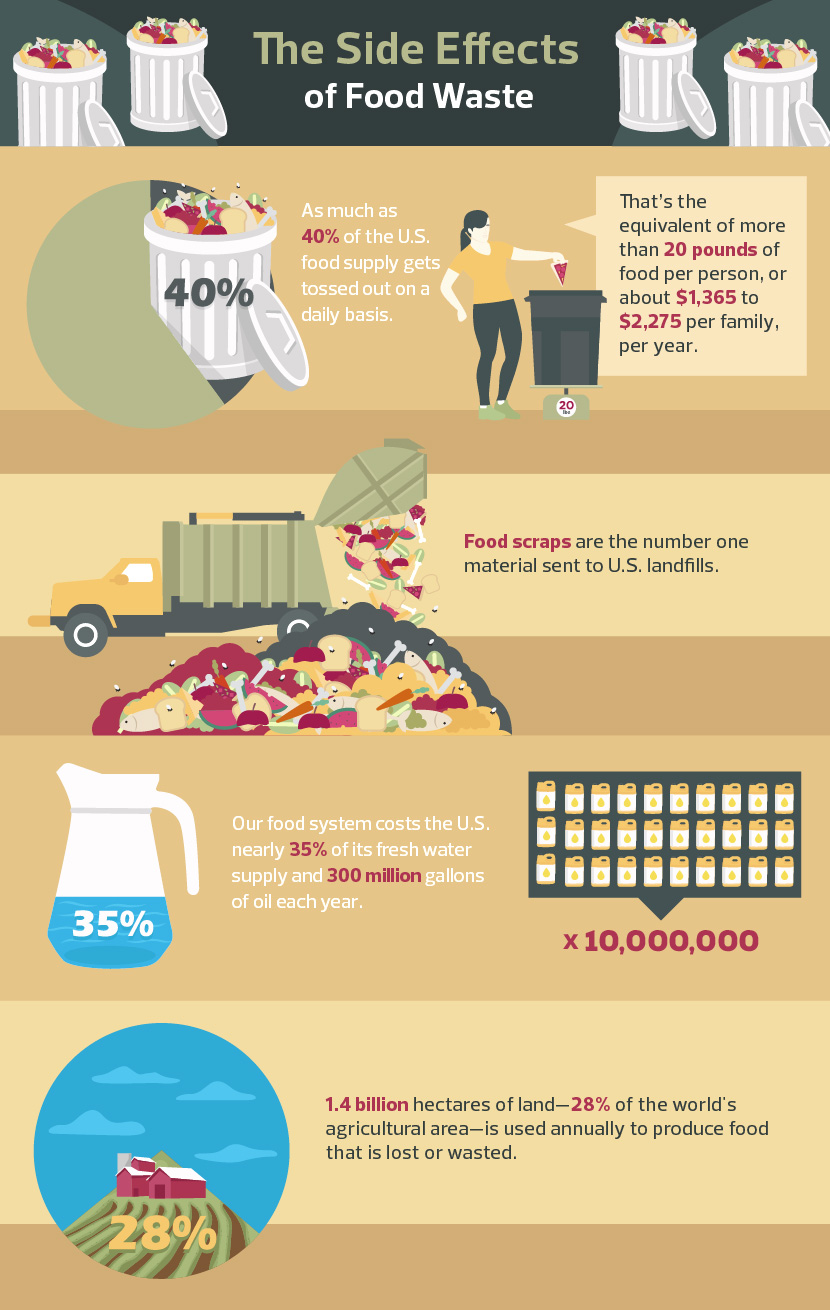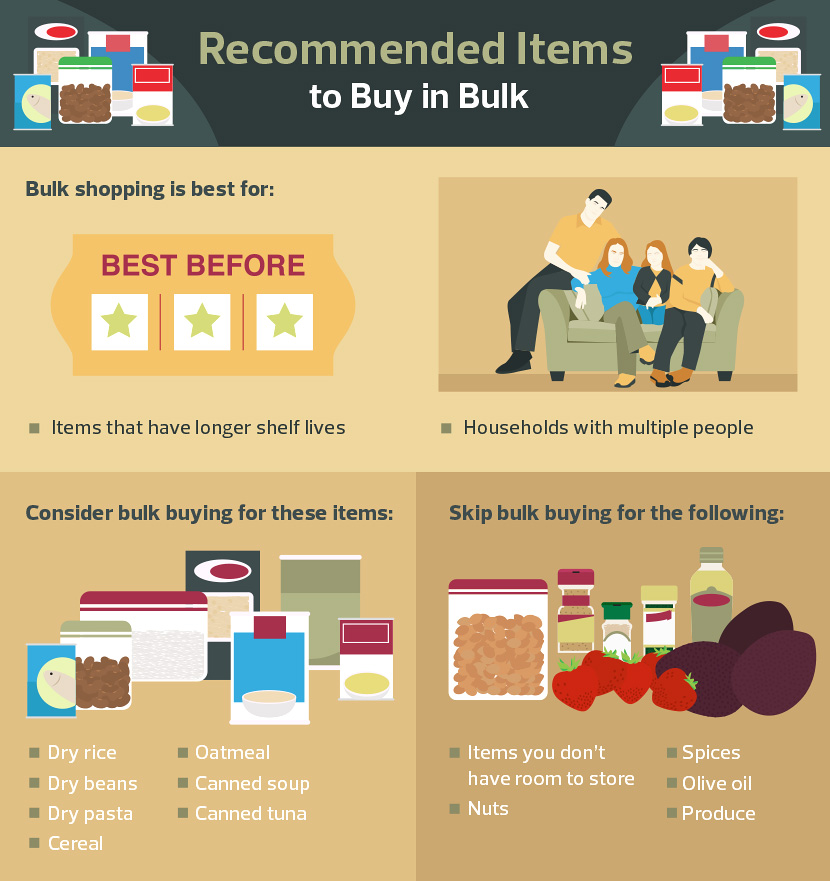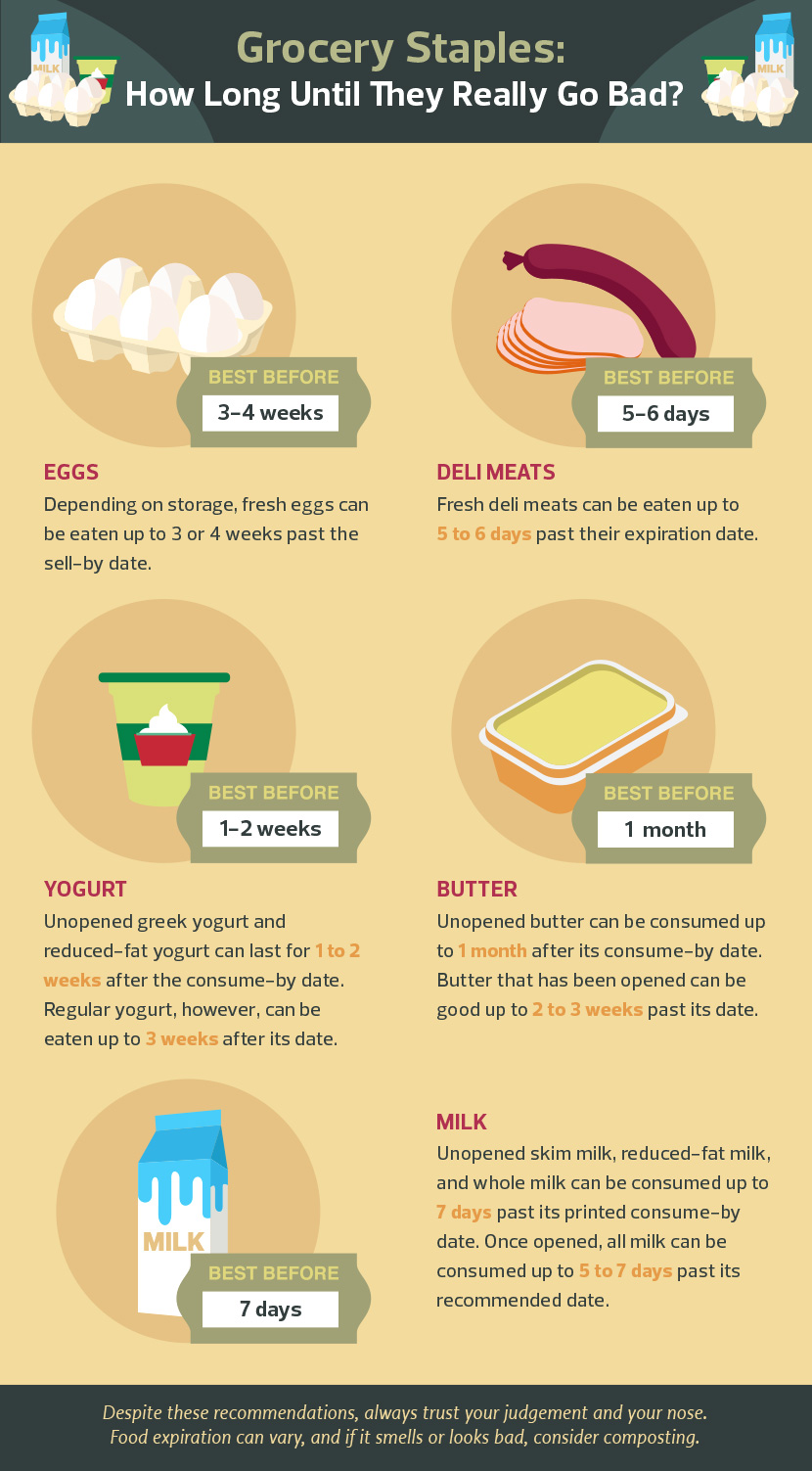Waste Not
Transform Your Grocery Habits to Slash Food Waste
The old adage of “waste not, want not” has been around for ages. However, when it comes to food waste, what we preach is often far from what we practice. Although some people insist our collective social consciousness has improved thanks to mass communication and globalization, our wasteful habits certainly prove otherwise.
Over the past decade, food waste has reached epidemic proportions. According to a recent report from the World Resources Institute, about one third of all the food produced worldwide never makes it from production to plate. http://www.wri.org/publication/reducing-food-loss-and-waste
Globally, not all waste is equal. In areas such as sub-Saharan Africa, where there is a significant lack of stable infrastructure, the majority of food waste is found at the production stage. Most food loss is the result of unmanageable conditions including inclement weather, mold, pests, lack of refrigeration, and inaccessibility to markets. Despite better infrastructure and resources, developed nations are not faring much differently. There, the fault mainly lies in an overly prudent food industry, ambiguous food labeling, and above all finicky consumers. More than half of food waste in Europe, North America, and Oceania (Australia, New Zealand, and the surrounding islands) happens at the final consumption phase, meaning more food is thrown out based on expiration or undesirability. http://www.wri.org/blog/2014/10/reducing-food-loss-and-waste-overlooked-strategy-creating-sustainable-food-system http://www.motherjones.com/environment/2015/06/youre-wasting-more-food-you-think
No matter where we live, we are all affected by the result of wasteful tendencies. However, when focusing on American food waste statistics, the numbers are staggering. According to estimates from the National Institutes of Health, as much as 40 percent of the U.S. food supply is tossed out every day. http://www.plosone.org/article/info%3Adoi%2F10.1371%2Fjournal.pone.0007940 That is the equivalent of more than 20 pounds of food per person, or about $1,365 to $2,275 per family, per year. http://www.worldfooddayusa.org/food_waste_the_facts
An estimated two billion people could be fed from the food the U.S. throws away each year. http://www.fastcoexist.com/1680494/the-environmental-impact-of-wasted-food Read on to learn how to combat food waste.
The Side Effects of Wasting Away

The results of abundant global food waste run deeper than just the growing disparity between the haves and have-nots. This ever-increasing waste takes a toll on local environments, too. According to the Environmental Protection Agency, food scraps are the number one material sent to U.S. landfills. http://www.epa.gov/osw/nonhaz/municipal/pubs/msw_2010_rev_factsheet.pdf This organic waste is responsible for almost 25 percent of methane emissions and $1.3 billion in landfill and transportation costs. http://journals.plos.org/plosone/article?id=10.1371/journal.pone.0007940 Our careless food production system also costs the U.S. nearly 35 percent of its freshwater supply and 300 million gallons of oil each year. http://www.fastcoexist.com/1680494/the-environmental-impact-of-wasted-food
The Bulk Bind
Dumping rotten purchases into the trash can week after week can get frustrating. So why do we continually waste so much food? Research suggests it comes down to poor shopping habits. Victoria Ligon of the UA Retailing and Consumer Sciences program studied the food purchasing and preparation habits of U.S. consumers for her master’s thesis. http://uanews.org/story/ua-food-study-shop-more-waste-less In her research, Ligon found people tend to buy too much at once in an attempt to reduce future trips to the grocery store.
Though it sounds counterintuitive, people are not shopping enough. So while many of us are price sensitive at the grocery store, we may overlook the cost of unused and discarded food.
Nevertheless, the enticing savings from bulk buying can lead to big time waste. The buy-more, save-more premise has driven the success of popular warehouse clubs, where major discounts are offered for very large quantities. Many of us stock up on too much food at once and may ambitiously plan weeks in advance. http://uanews.org/story/ua-food-study-shop-more-waste-less We often trick ourselves into thinking we really can eat a bulk container of fruit or an oversized jar of spaghetti sauce before it goes bad.
However, our lifestyles do not work out that way. Our eating habits rarely align with our food shopping purchases. We often get hungry on the way home from work, stop for a quick bite, order a takeout, or call up friends for a dinner out. In the meantime, the food in the refrigerator or pantry may be on its way to spoiling. Thankfully, there are some simple, easy ways to cut down on your family’s food waste, one grocery trip at a time.

Tips to Produce Less Waste at Home
Part of reducing waste means learning how to shop for what you need and how to use what is available. A good first step is to get a better handle on home cooking. Consider enrolling in a cooking class with a friend or family member. These classes are a great place to learn culinary basics such as food safety, portion measurements, shopping tips, creative leftover ideas, and more. You will also get a great library of recipes to help make the most out of any random ingredients you may have in your fridge at any given moment.
Next, keep track of your grocery purchases and eating habits. For a month or so, keep a food diary to record what you eat and throw out every days. Include what you buy each week at home or eat in restaurants. Then track what you discard, from unfinished food during a meal to spoiled leftovers or rotting food. Once you begin this process, you can focus on how to buy less and use more – instead of buying more and using less. This should prepare you to shop more purposefully and shell shock you into making better purchases for your wallet.
How to Shop Smarter with Food Waste in Mind
With a little effort, we can all food shop more efficiently, save a little money, and produce less waste for the environment.
The main culprits of consumer food waste are fresh foods such as dairy, bread, meat, fruit, and vegetables. Of course, these are the foods that are meant to keep us healthy and happy. However, the downside to fresh produce is its relatively short shelf life.
Buy Fresh, Buy Often
Shopping frequently for fresh items can cut down on a lot of waste. Buy fruit, veggies, and bread to last around two to four days. Make various portions of veggie-based dishes, such as casseroles and soups, and freeze for later. Before you hit that four-day mark, consider freezing any leftover produce to cut back on waste.
Understand Expiration Dates
We are all guilty of throwing away food way before it goes bad, mainly out of fear, but also out of confusion.
Part of the reason we throw away so much food is the ambiguity around the terms "use by," "sell by," and "best by." For the most part, these terms were always intended to help the food industry with quality control when it came to inventory and wholesale transactions. http://www.prevention.com/food/smart-shopping/should-you-ignore-expiration-dates In fact, there is no standardized rule for food and expiration dates. This not only confuses consumers, but also worsens the increasing food waste problem.
In short, the sell-by date is a general guide to indicate the overall freshness of a food item, but it is not a definitive consumption date by any means. Regardless of the original intent of the system, the food industry has become overly cautious with the “sell by” or “best by” dating system itself. Fearing liability over foodborne illnesses, many states have even entered the labeling game, passing laws that make it illegal to sell goods past their so-called expiration date (which was never absolute to begin with).
For example, yogurt is typically stamped with a fairly quick expiration date. However, this one-size-fits-all dating system is flawed. Different kinds of yogurt have distinct shelf lives and, depending on storage, the expiration range can greatly differ from its stamped “consume by” date. http://www.eatbydate.com/dairy/yogurt-shelf-life-expiration-date/

Confused yet? Well, do not be, because this shopping labyrinth has a quick solution: research. Websites including Shelf Life and Eat by Date help consumers know what to buy, when to buy it, and how to store it.
Store Smart
Another solution is to find ways to make the food you buy last longer. As far as produce goes, many of us toss fruit and veggies into the crisper drawer. However, unless the drawers come with a manual humidity setting, often these so-called crispers are little more than just plain old drawers. The reality is that different fruits and veggies require distinct humidity settings and really should not be grouped into one drawer. http://www.gardening.cornell.edu/factsheets/vegetables/storage.pdf Most fruits and veggies that are ripe for eating should be kept within sight on the refrigerator shelves so they are not forgotten.
make the most of your weekly food purchases, proper storage is essential. Accordingly, organizing your fridge is one of the best ways to help you dramatically reduce waste.
The top shelf of the refrigerator is the warmest part of the unit. This space is good for prepared food, yogurt, cheese, and sauces. The bottom shelf is the coldest part of the fridge, so this is a good space for meats, fish, and poultry (all properly sealed, of course).
Depending on the model, salad crisper drawers with manual humidity controls are normally pretty good at retaining moisture. This is the best place to put delicate veggies that tend to go bad fast, such as lettuce, cucumber, cauliflower, broccoli, beans, carrots, and leafy veggies.
Some fruits can also be stored in the crisper, but others are best left on the counter until ripe. Apples, apricots, and nectarines are fine to keep on a cool counter or fridge shelf. Strawberries and cherries need cold storage, but since excess moisture attracts mold, it is best to store these in an airtight container on a fridge shelf.
Although it is a convenient place for your favorite go-to snacks, the door rack is a bit of a wild card when it comes to storage. The temperature of the racks is constantly fluctuating due to the door opening and closing. Therefore, it is not a good place for perishables such as milk, but it does make a nice home for store-bought condiments, butter, and fruit juices.
For more storage advice, the Ecology Center has a complete list of tips on vegetable and fruit storage.http://ecologycenter.org/wp-content/uploads/2013/02/veggie-storage.pdf
Although it can be difficult to break food habits, a little research and thoughtfulness can steer us toward more purposeful and efficient shopping and eating. As a result, money can go further and we can reduce our personal contribution to the world’s enormous food waste problem.
Embed the article on your site

